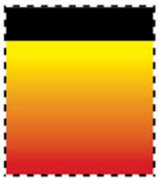Multicolored Leaves More Inherently Distinctive than Multicolored Trademarks:
TTAB Rules Multicolored Trademarks on Product Packaging Are Never Inherently Distinctive
By: Sean D. DetweilerOctober 02, 2018
As we enter into fall, the leaves on the trees will soon be multicolored. They are sure to be inherently distinctive, with each tree being a unique creation. It is too bad multicolored trademarks do not get the same distinction! On September 10, 2018, in In re Forney Industries, Inc., the Trademark Trial and Appeal Board (TTAB), in a precedential decision, held that a multicolored mark used on product packaging is never inherently distinctive. The TTAB further held that such marks can only be registered on a showing of acquired distinctiveness (In re Forney Industries, Inc., 2018 WL 4348337 (T.T.A.B. Sep. 10, 2018)).
Forney Industries, Inc. applied to register a color mark on the Principal Register that consisted of the colors red into yellow with a black banner located near the top as applied to packaging for the goods. Dotted lines depict placement of the mark on packaging.
 |
The application for registration was for use on packaging in connection with various metallurgic products. The same color combination was used on different sized and shaped labels and packaging features for a variety of different products, so there was no single well-defined shape. The United States Patent & Trademark Office (USPTO) refused registration of the mark because it is a color mark that is not inherently distinctive under Sections 1, 2, and 45 of the Trademark Act, (15 U.S.C. §§ 1051, 1052, 1127).
Forney appealed, arguing the mark claims multiple colors functioning as a symbol, as opposed to a color mark, and the mark is product packaging trade dress that may be inherently distinctive and registerable without acquired distinctiveness.
The TTAB disagreed, finding that the mark is not product packaging trade dress, but rather a color mark consisting of multiple colors applied to product packaging, and the color mark was not combined with a uniform shape or distinctive design, but rather multiple varying and differing shapes.
The TTAB further considered the overall registerability of such a multicolored mark, and found that color marks applied to products are never inherently distinctive, that when assessing color marks there is no distinction between colors applied to products and colors applied to product packaging, and that there is not a distinction between a mark consisting of a single color or multiple colors without additional elements such as shapes or designs. Overall, the TTAB stated that use of color in product packaging can be inherently distinctive only if specific colors are used in combination with a well-defined shape, pattern, or distinctive design.
Accordingly, Forney could not establish an inherently distinctive trade dress because its color combination was not combined with a well-defined shape, pattern, or other distinctive design. In addition, the mark is a color mark. It therefore is not inherently distinctive, and may only be registered on the Principal Register by showing that it has acquired distinctiveness under Section 2(f). Acquired distinctiveness is a legal theory that allows registration of an otherwise non-distinctive mark upon a showing that, because of the extensive use and promotion of the mark, typically over a period of at least 5 years, consumers now directly associate the mark with the applicant for registration as the source of those goods.
Because Forney did not request registration under Section 2(f) (acquired distinctiveness) in the alternative, acquired distinctiveness was not at issue. Therefore, the TTAB affirmed the USPTO’s refusal of registration.
A key takeaway is that if you have a multicolored mark, you should pursue registration for it as applied to a well-defined shape. Alternatively, seek registration after multiple years of use and demonstrate acquired distinctiveness under Section 2(f).
For more information, please contact Sean Detweiler.
-
- Name/Title
- Direct Dial
-
-
Sean D. Detweiler
Member - 781-697-2257
-
Sean D. Detweiler


